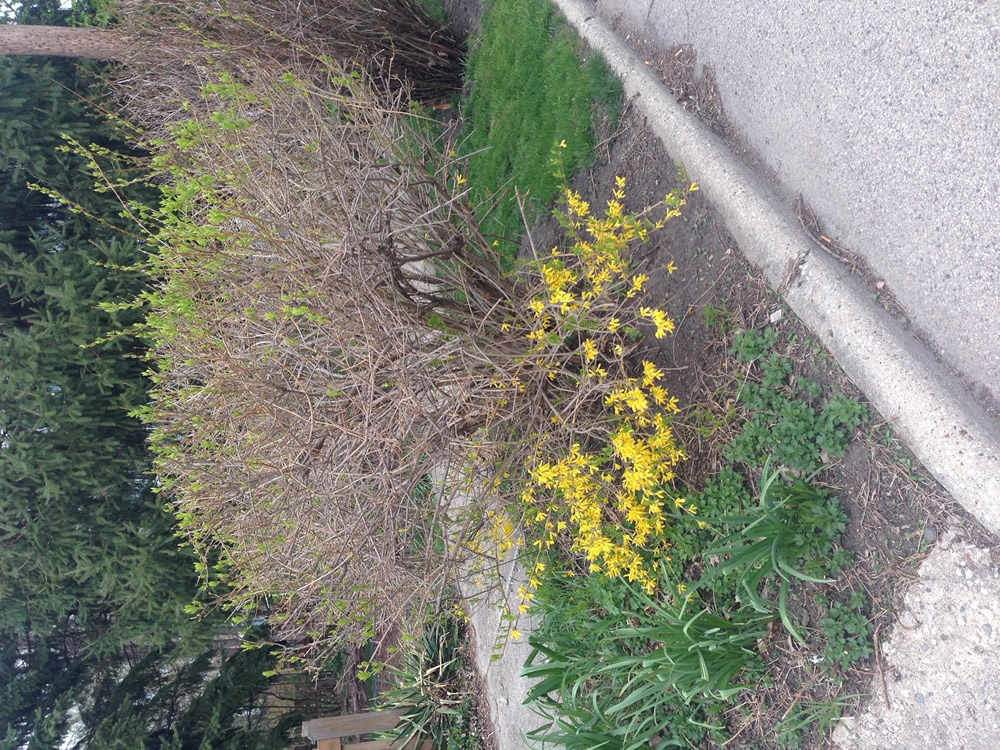Issue 2, May 7, 2019
Phomopsis Galls on Forsythia
Forsythias are known for being easy to grow shrubs that are tolerant of many conditions. While they have relatively few known pest issues, we occasionally come across plants with 1 to 2 inches in diameter, round galls, with unique clusters of bumpy nodules pressed tightly together. They are hard to spot during the summer, but they become evident during the dormant season when no leaves are present. Aside from being unsightly, the galls ultimately girdle and kill branch tissues beyond the gall.

The galls have been attributed to Phomopsis fungi. Little is known about the life cycle of the Phomopsis gall fungi, and there no chemical treatments available. Instead, prune out and destroy the infected branches. Be sure to sanitize your pruners between cuts. Promote plant vitality through good horticultural practices.
This spring, you may have also noticed many forsythia shrubs that failed to bloom, or only bloomed close to the ground. These shrubs are likely less cold hardy selections. Cold winter temperatures often kill the flower buds, while the more cold hardy vegetative buts remain unharmed. The flower buds that survived near the gown were likely buried in snow and insulated from extremely cold temperatures.

Author:
Travis Cleveland